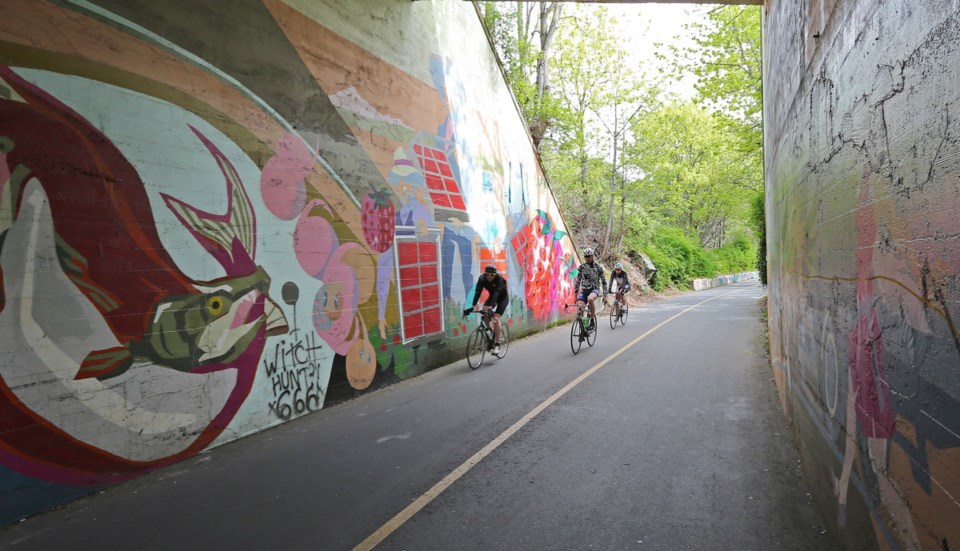There has been much discussion, argument and debate for many years about continued rail service on the E&N right of way. Meanwhile, the real value of the asset, the continuity of the right of way, is in danger of being lost.
Unless a viable transportation option is agreed upon soon, the right of way will be lost, as many others in this region have been.
Limited study of rail options shows that large capital expenditures and high ongoing subsidies would be needed for all of them. Estimates of present and future potential traffic do not justify this. No viable business plan for this has appeared, likely because viability is impossible to demonstrate with any degree of rigour.
There is, however, an alternative viable and achievable future for this corridor. Parts of the corridor are already functioning successfully as multi-use trails (the Galloping Goose is an example of a multi-use trail), providing local transportation alternatives and many other benefits. Successful long-distance trails such as this have been developed all over North America as railways outlived their original purpose. I believe this is the option we should pursue, because it is a much better fit with the development of Vancouver Island.
How can a decision be made that a rail right of way is no longer viable? In most cases, it comes down to simple arithmetic; when the costs of maintenance and operation of the railway are not balanced by sufficient revenue from freight and passengers, viability is questionable. When a rail route has some strategic importance to resource development or if it is the best option available, subsidy can be appropriate, but there is a limit to the level of subsidy that is sensible for the public to pay.
The E&N railway was developed, subsidized by massive land grants, primarily for the transportation of bulk freight at a time when road-transportation capacity on the Island was very limited. The opportunity for freight and passengers today is much more limited.
In 2009, consultant IBI, on behalf of the province, studied the potential for freight and concluded: “The existing railway freight markets are fairly small, and the average cost of the improvements per tonne of freight moved would be very high.”
At best, it estimated the potential business is half of what would be required to justify the improvements, this at a time when coal mining on the lower Island is gone, and the last logging railway on the Island closed for good last year in favour of trucking.
Unlike railways, the investment required for multi-use trails is modest. The Welland Canal Trail, part of the 140-kilometre Niagara Circle System, is projected to cost $37.5 million. It will generate $200 million in economic activity during construction and $5 million per year afterward. A 324-kilometre section of the Trans Canada Trail between Drumheller and Edberg, Alta., was studied by Price Waterhouse in 2000. It found that for construction costs of $7.5 million, returns of about $12.5 million per year would be generated.
These economic benefits illustrate good economic returns from modest investments and do not even include the health, recreational and alternative-transportation benefits to the public and government.
The idea that a continuous trail can use the same corridor as a railway has been challenged by an engineering study done for the Nanaimo Regional District, which showed 41 places in that district alone where sharing the right of way was deemed impractical.
We have a choice to make. We can continue to pretend that the romance of rail justifies public expenditures of hundreds of millions of dollars for results that, based on past performance and studied potential, can only disappoint. Or we can recognize the benefits that modest investment in the corridor can bring as a multi-use trail.
Doing nothing will result in the loss of the asset that cost us so much.
Denise Savoie is a former Victoria city councillor and former member of Parliament.



